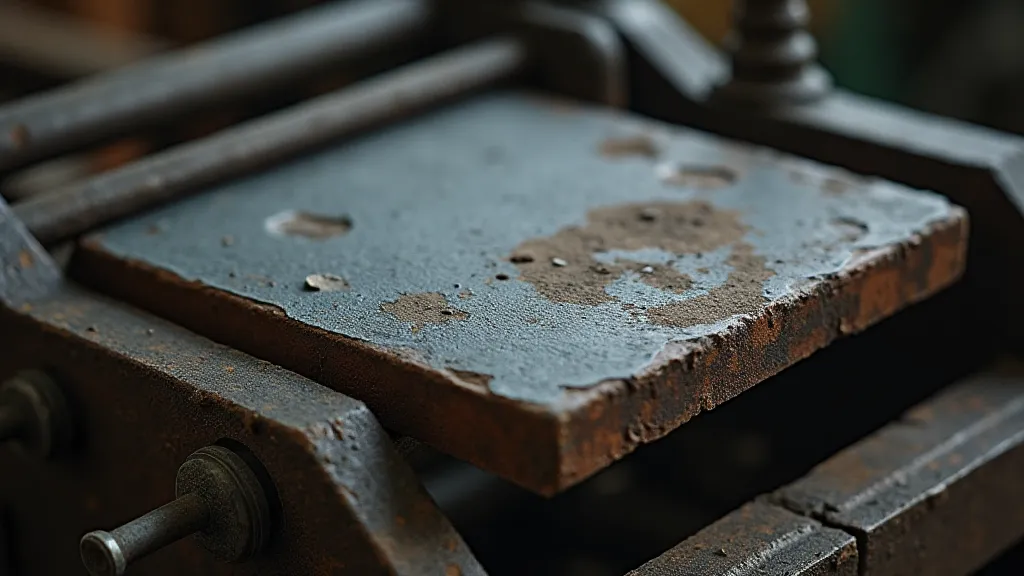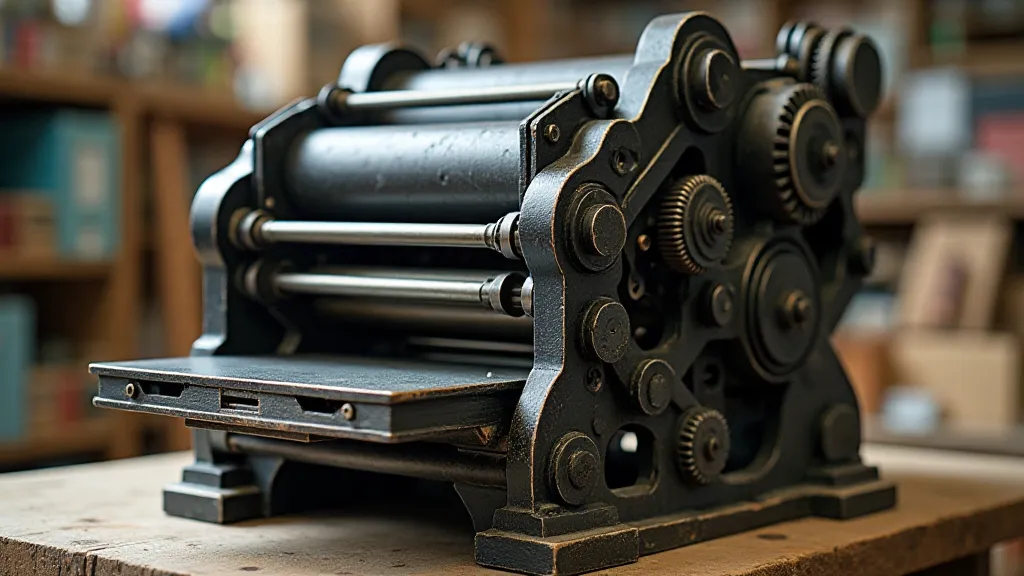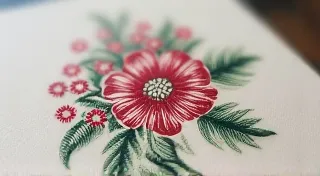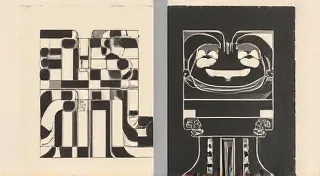Understanding the Parts of a Letterpress: A Beginner's Guide
The allure of letterpress printing lies in its tactile beauty and rich history. But beyond the gorgeous impression and satisfying click of the press, lies a fascinating machine with a surprisingly intricate mechanism. For those just starting to explore the art of letterpress, understanding the components of a printing press can feel a little overwhelming. This guide aims to demystify those parts, providing a beginner-friendly breakdown of the essential elements that bring letterpress printing to life.
A Brief History – Why Understanding the Machine Matters
Letterpress printing, in its modern form, largely developed in the 15th century with Gutenberg’s printing press, revolutionizing the spread of knowledge. While designs have evolved over the centuries, the core principles remain the same. Early presses were marvels of engineering, and modern letterpress machines build upon that legacy. Knowing how each part functions not only enhances appreciation for the craft but also assists in maintenance, troubleshooting, and ultimately, producing beautiful prints. The selection of choosing your type, for example, plays a crucial role in the overall aesthetic, and a deeper understanding of the press allows you to maximize the impact of your font choices.
The Core Components: A Detailed Breakdown
Let’s break down the major parts of a letterpress printing press. We’ll focus primarily on the common tabletop presses seen in modern studios, although many principles apply across different press types. We'll organize them by function: the foundation, the inking system, the impression mechanism, and the holding system.
1. The Foundation: Frame, Bed, and Base
Every press needs a solid foundation. The frame provides structural integrity and stability. Often made of cast iron or steel, it’s the backbone of the entire machine. The bed is the flat, horizontal surface where the paper is placed for printing. It’s carefully calibrated to ensure accurate registration. Finally, the base provides support for the frame and bed, often incorporating adjustable feet to level the press.

2. The Inking System: Ink Fountain, Inking Rollers, and Dampening System
Getting the right amount of ink onto the type is crucial for a quality print. This is handled by the inking system. The ink fountain is the reservoir that holds the ink. It’s typically made of bronze or another durable material. Inking rollers, made of rubber and covered in a special compound, pick up ink from the fountain and transfer it to the type. These rollers are arranged in a sequence, progressively transferring the ink to create a consistent layer. Older presses often feature a manual inking system, while modern presses may be semi-automatic. Experimenting with ink and color mixing is a key skill for any letterpress printer, allowing for unique and custom color palettes.
Historically, a dampening system was used to control the paper's moisture, helping the ink adhere properly. While less common in modern tabletop letterpress setups, understanding this principle is important as it impacts ink behavior. The dampening system applied a controlled amount of water to the paper before inking.
3. The Impression Mechanism: Platen, Grippers, and Cam
This is where the magic happens: the transfer of ink from the type to the paper. The platen is a flat, rubber-covered disc that presses the paper against the inked type. It’s driven by a precisely timed cam, which is a shaped piece of metal that rotates and provides the force to move the platen. Grippers, usually made of metal, hold the paper securely as it’s pulled into the press. Their design and alignment are critical for accurate registration and preventing paper distortion.
The cam’s shape determines the speed and pressure of the impression. Adjusting the cam’s position (often called "setting the press") allows for varying levels of impression, from a subtle kiss to a deep emboss. This pressure also significantly impacts the choice of paper you use; a heavier weight stock will handle a deeper impression better than a thinner variety.
4. The Holding System: Chase, Tympan, and Furniture
Before printing, the type (or photopolymer plate) needs to be securely held in place. The chase is a rectangular frame that holds the type. It’s usually made of steel and has a recessed area to accommodate the type. Tympan is a smaller frame that sits within the chase and holds the paper in precise alignment. Furniture, which are small blocks of metal, fill empty spaces within the chase to ensure a tight and even hold. The chase is locked into the press, securing all components.
5. Additional Components and Considerations
Beyond these core components, there are other parts that contribute to the letterpress printing process. The roller bearings ensure smooth operation of the rollers. The gear train transmits power from the motor to the various components. The registration system allows for precise alignment of the type and paper. Understanding how these systems interact is key to consistent print quality.
Maintenance and Care: Extending the Life of Your Press
Like any precision machine, a letterpress requires regular maintenance. Cleaning the rollers and ink fountain prevents ink buildup. Lubricating moving parts ensures smooth operation. Careful handling and proper storage protect the press from damage. Consulting the manufacturer’s manual for specific maintenance recommendations is essential. Proper care is paramount to ensuring the longevity of your press and consistently high-quality results.

Delving Deeper: The Business Side and Artistic Considerations
While mastering the mechanics of a letterpress is crucial, understanding the business and artistic aspects will contribute to your overall success. Starting a letterpress studio requires careful planning and a passion for the craft. Consider factors like studio space, equipment costs, and marketing strategies. The initial investment can be significant, but the rewards of creating unique, handcrafted pieces are immeasurable. If you’re considering launching your own letterpress venture, research and planning are key. Thinking about the business side of letterpress early on will help you navigate the challenges and build a sustainable operation.
Beyond the Basics: Advanced Techniques and Troubleshooting
Once you’re comfortable with the fundamentals, explore advanced techniques like blind embossing, double hits, and intricate registration. These techniques require a keen eye and a deep understanding of the press's capabilities. Troubleshooting is an inevitable part of letterpress printing. Common issues include ink smudging, registration problems, and paper distortion. Systematic problem-solving and a willingness to experiment are essential for overcoming these challenges.
Conclusion: Appreciation and Understanding
The world of letterpress printing is captivating, blending history, craftsmanship, and technical skill. While initially daunting, understanding the various components of a printing press isn’t as complicated as it seems. By familiarizing yourself with the chase, tympan, platen, and other key parts, you’re not only deepening your appreciation for the art but also gaining the knowledge needed to troubleshoot problems and ultimately, create beautiful, tactile prints. From the simple elegance of the chase to the powerful force of the cam, each part plays a vital role in bringing your designs to life. The meticulous process, from selecting the right paper to expertly manipulating the cam, results in a product of exceptional quality and artistic merit.





